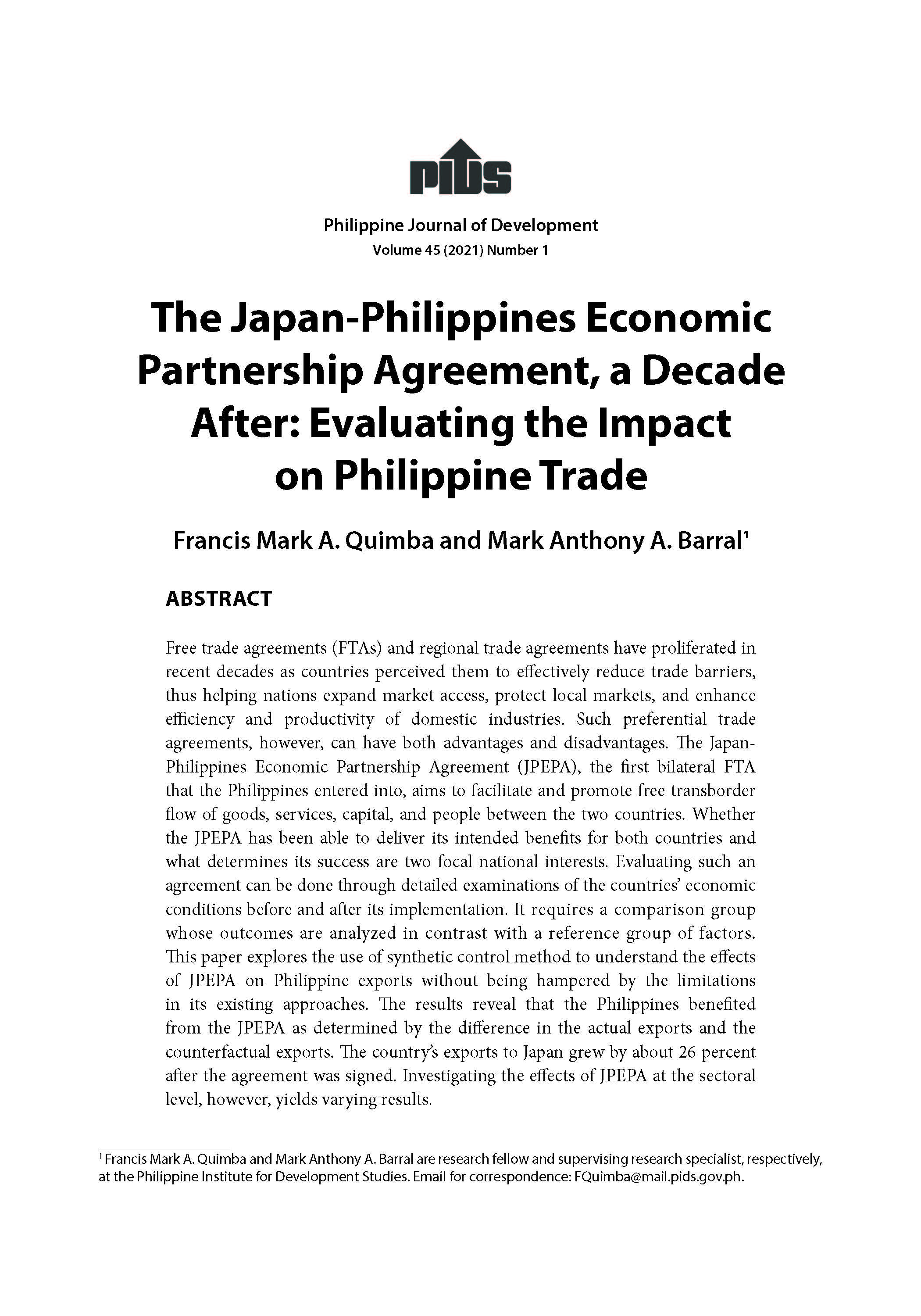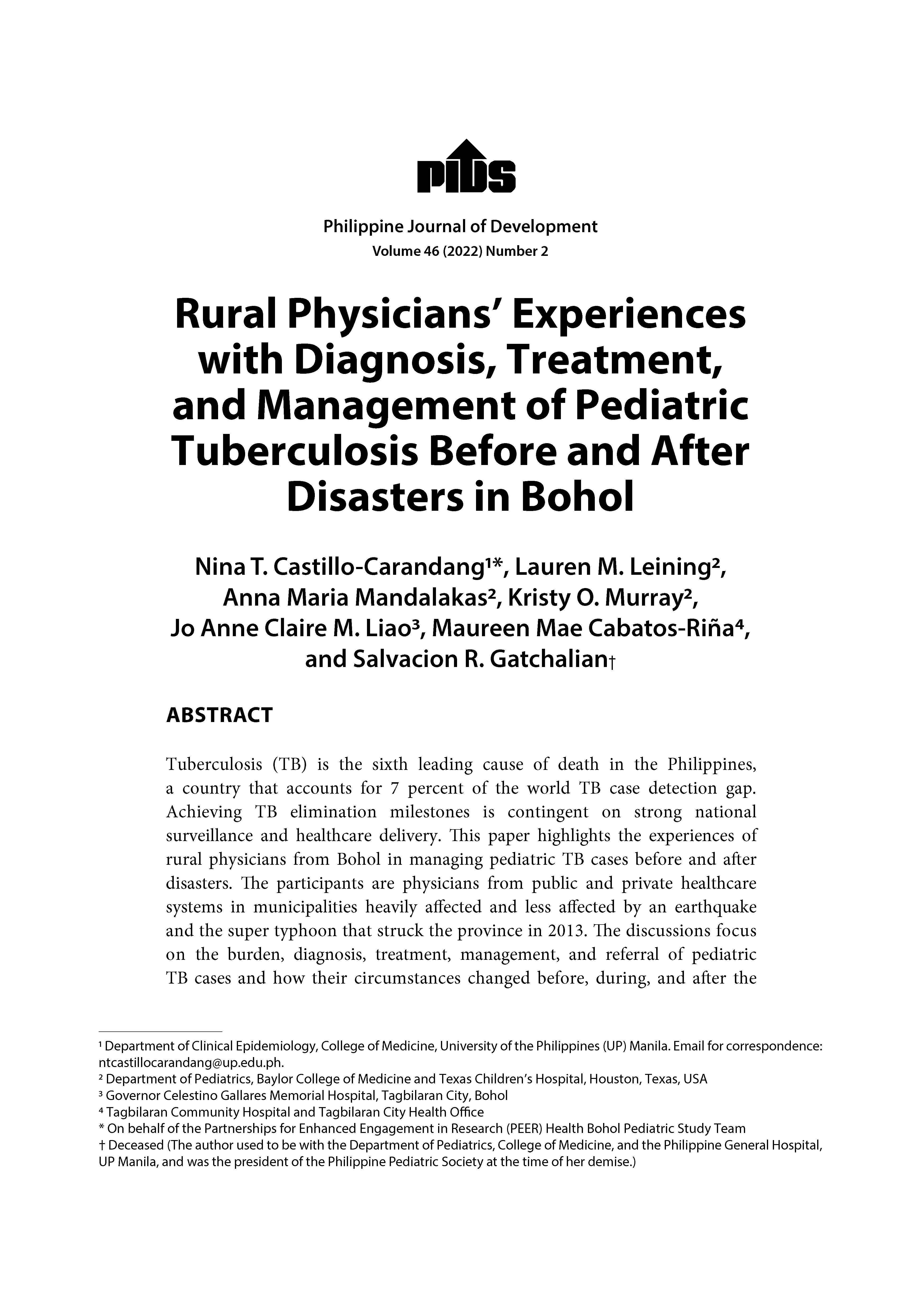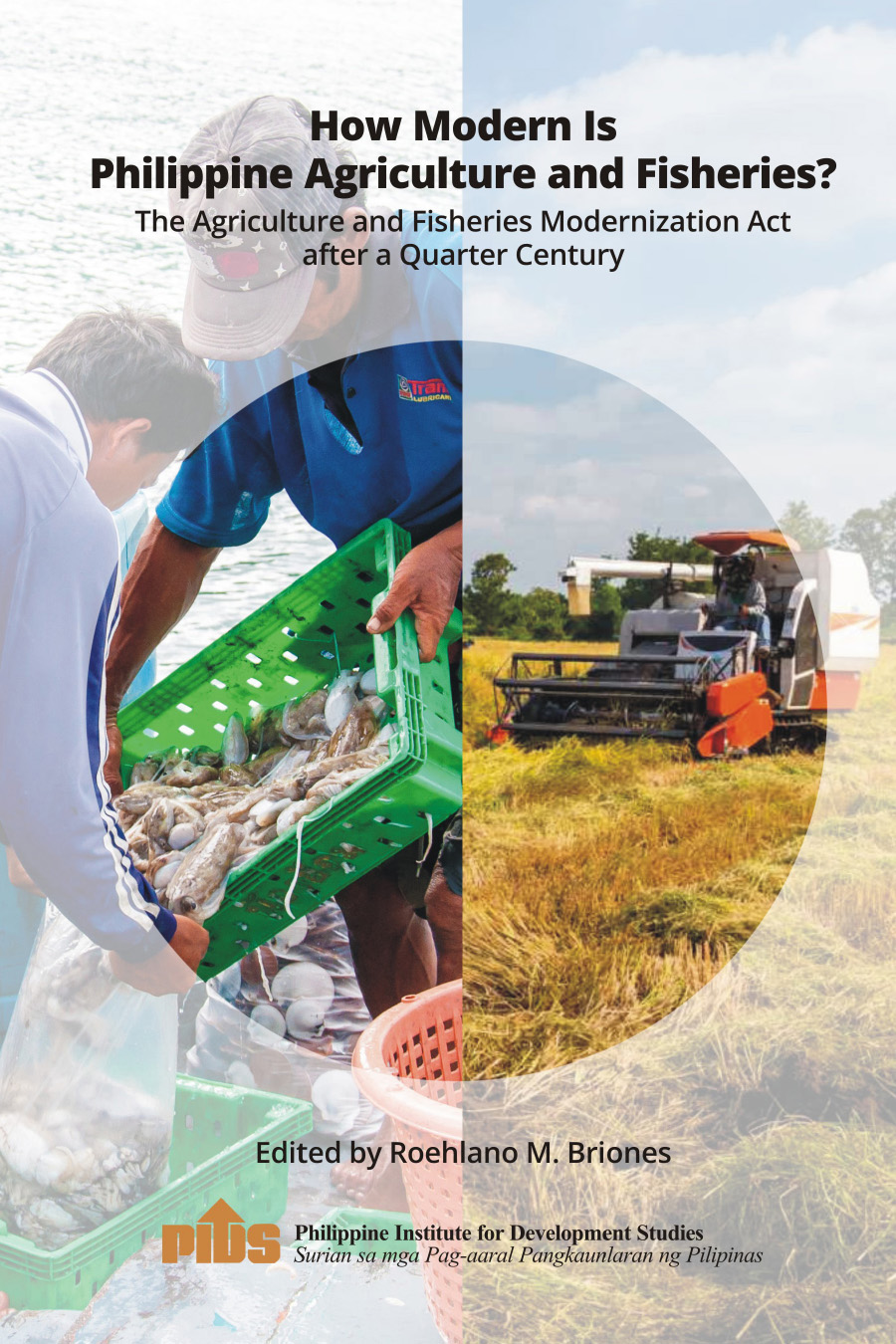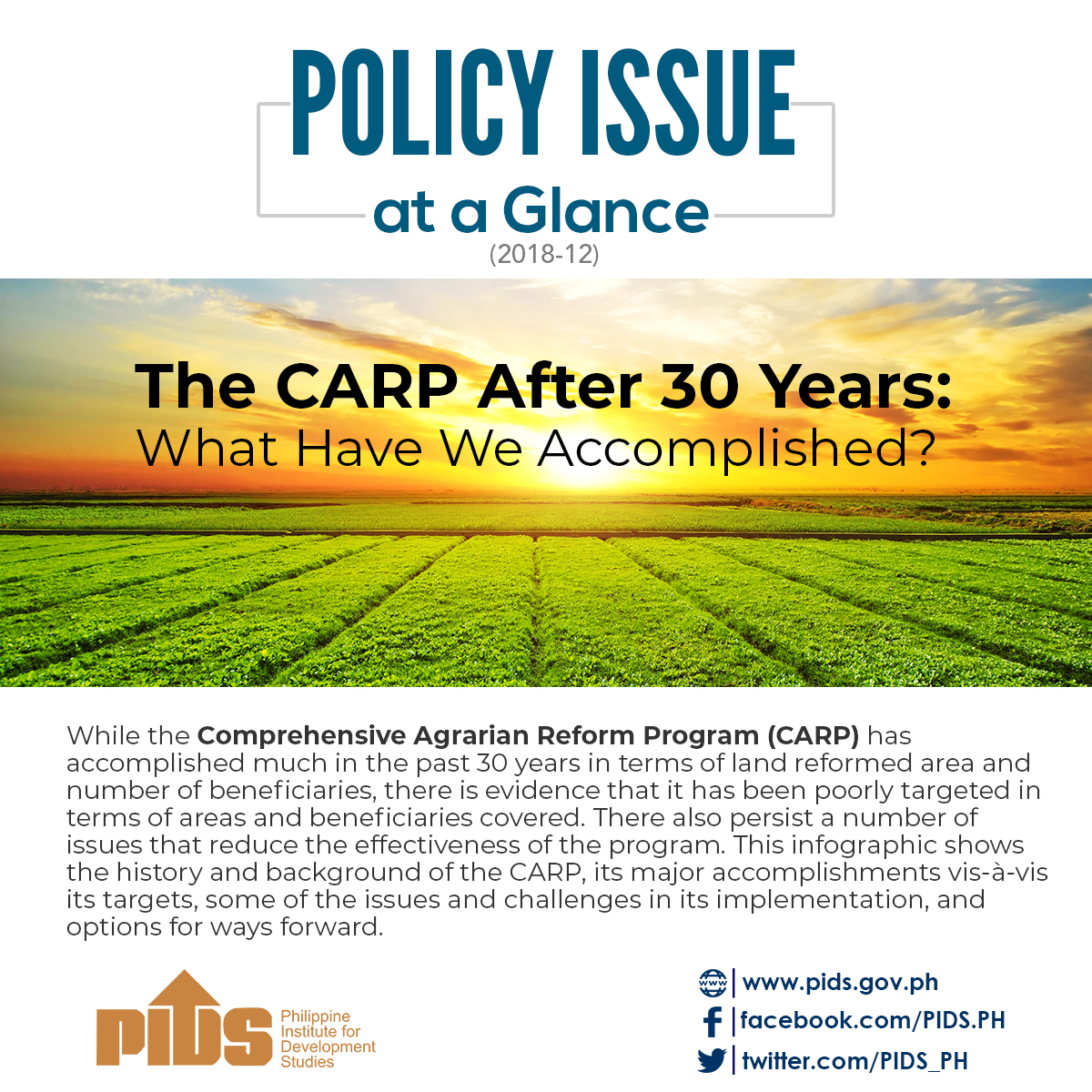In the midst of the crisis that has gripped our country and the whole world as a result of the COVID-19 pandemic, we should be thankful that the Philippine economy was in the best of circumstances to receive the blow. Our GDP growth had been averaging close to 6 percent per annum for close to a decade. The poverty incidence had declined from 21 % to 16% in the last five years. We have been blessed with several “sweet spots” that benefited our economy. The first is the demographic sweet spot which will in no way be erased by the pandemic, no matter how prolonged it will turn out to be. Our young, growing and English speaking population—rare among developed and emerging markets that are generally suffering from low fertility rates and rapid ageing—has been the strong foundation of our two leading engines of growth: remittances from more than 10 million Overseas Filipino Workers (OFWs) and earnings of more than one million well paid BPO-IT workers. The very high proportion of young people in our population also makes for a very rich domestic market for all types of consumer goods and services that serve as a strong basis for growth even in times of a global recessions. Our export-to-GDP ratio is at 30% one of the lowest in the Asian region. When things go bad for the whole global economy, our businesses focus on our 110 million population as their main market.
A second “sweet spot” is geographical in nature. We are fortunate in these times of recurring global economic and financial crises to be located almost in the epicenter of the so-called Asian Century in which three economic territories will dominate the global economy: China, India and the ASEAN Economic Community (AEC). Together with our other East Asian neighbors, these are the economies that are expected to recover the soonest from the economic fall out of the pandemic. In fact, in mid-April 2020, the Washington-based Institute of International Finance (IIF) predicted that the Asia-Pacific region is expected to lead the global recovery post-COVID-2019 and the Philippines will be among the most resilient in being able to post a positive growth rate, albeit much reduced from its usual 6 % GDP increase. It is up to us to take full advantage of our proximity (both physically and culturally) to the economies that will lead the recovery. Then there is the “fiscal sweet spot.” Thanks to the fiscal discipline followed by at least the last three Administrations, we have a manageable debt-to-GDP ratio (about 40%) that will enable us to borrow the large amounts needed to finance the emergency solutions to the problems brought about by the coronavirus, i.e. improving significantly our health care systems and bailing out the poor and the near poor through cash assistance, subsidies and preferential credit terms. For comparison, other countries hard hit by the pandemic have less elbow room to borrow. The United States has a debt-to-GDP ratio of 115%; France, 213%; Spain, 167%, and Italy, 135%.
Given these strong fundamentals, what is my reading about how the Philippine economy will perform over the next year or so? Like all other individuals or groups (e.g. Asian Development Bank, World Bank, Department of Finance, local and multinational banks, credit rating agencies, etc.) making forecasts in the midst of the uncertainty brought about by the pandemic, I have to make certain assumptions about how long will the so-called Extended Community Quarantine (ECQ) last and what form will it take after April 30 in the various regions of the country. As I have done in all my years of forecasting, I refuse to be a two (or more)-armed economist, the kind who says, on one hand this could happen but on the other hand, something different can happen. I respect those who do a lot of scenario planning, presenting different possible future scenarios. But as long as I make all my assumptions and premises crystal clear, I will be presenting a bright outlook for the coming months, precisely because we are starting from very strong geo-economic foundations as we combat the ill effects of the virus.
As regards what could happen after April 30, I am borrowing from the scientific opinions expressed by the University of the Philippines (UP) COVID-19 Pandemic Response Team. In their publication entitled, “Modified Community Quarantine Beyond April 30: Analysis and Recommendations,” they expressed their views that on the bases of two metrics, the ECQ has been relatively successful. Let me quote extensively from their studies: “Time-series analysis shows it now (article was published on April 13, 2020) takes a little longer for the number of confirmed cases to double in number. What took 3 days for the total number of cases to double now takes about 6 days to happen. Based on these trends, one can estimate about 9,000 to 44,000 possible cases reported by the end of April 2020. In general, this indicates the relative success of the EQ—along with other interventions—in containing the spread of the virus.” Based on another metric, the same conclusion is reached: “Another metric that can be used to test effectiveness of the ECQ is the case fatality rate. Based on best available data on 10 April 2020, we report an estimated case fatality rate of 5.38 % and a reproduction number of .06398 %, which means that the ECQ has been effective. The goal is to keep bringing the reproductive number down to lower than 1.0 through continued medical and non-medical interventions.” These non-medical interventions are well known: social distancing, the obligatory wearing of masks in public, the constant washing of hands and disinfection of surfaces that carry the virus, the strengthening of the immune system through the proper diet, regular physical exercise, sufficient sleep, the avoidance of stress, and others.
From the data presented b the UP COVID-19 Pandemic Response Team, I arrived at the conclusion that our top officials will implement after April 30 a modified community quarantine. This would consist in implementing a graduated activation of ECQ depending on the level of risk in certain geographical areas at a given time. The lock down will no longer be Luzon wide or even less for the entire Archipelago. Under this set up, provinces (or even lower level LGUS like municipalities or barangays) may be put under ECQ depending on how close or far they are to an estimate outbreak threshold. As the UP body rightly observes, prolonged restriction on the movement of goods and services over a large area(i.e. region-wide) can unnecessarily paralyse local economies. This view of scientists coincides with those expressed by economists and business people who have been advocating for calibrated easing after the ECQ. For example, the Foundation for Economic Freedom has recommended for a gradual easing that will allow more economic activity beyond the essentials of food and medicine. Similar views have been expressed by a group of economists from the University of the Philippines who called for gradually lifting selectively lockdown measures once the health care system has been adequately provisioned. A group of employers headed by Teresita Sy-Coson also recommended that all industries, including the transport sector, should be allowed to resume 50 % of operating capacity as long as such a calibrated easing will be accompanied by the appropriate health precautions, like making tests more available and disinfecting measures as well as sanitation safeguards.
The call for the dismantling of indiscriminate and total lockdown is motivated by a concern for the great economic harm that has been inflicted not only on the poor but also on low-income but not poor and low-middle-income households that together constitute 85 % of Philippine households. These are figures taken from the most comprehensive study about middle-income households in the country by Dr. Jose Ramon G. Albert et al of the Philippine Instituted for Development Studies (PIDS). In a study entitled “Profiles and Determinants of Middle Income Class,” Dr. Albert et al calculated the monthly incomes of different income classes among Philippine households in 2017. Those who fall below the poverty line and can be classified as “poor” earned less than P 9,530 per month. These constituted 22 % of total households in 2017. Those who belong to the low-income but not poor families earned between P 9,530 to P19,040 and accounted for 37% of total households. Finally those who belong to the low middle-income households earned between P19,040 to P38,080 monthly and constituted 26 % of the total. The vast majority of the heads of these households are daily wage earners (minimum daily wage of approximately P500) or micro entrepreneurs. After almost two months of the ESQ, even those from the low-income but not poor and low middle-income families could have easily joined the ranks of the poor, those falling below the poverty line. The monthly subsidy of 5 to 8 thousand pesos for each household is too meagre to keep body and soul together during these times of hardship.
That is why, instead of debating endlessly whether or not middle-income households should also be subsidized, serious consideration should be given to the clamor for gradually easing the quarantine and allowing more businesses to operate. The constant reference to the choice between “lives and livelihoods” is a false dilemma. If livelihoods are sacrificed today for too long, lives in the future of numerous individuals may also be at stake, not necessarily from the coronavirus but from other infirmities that could result from lack of food and medicine that reduce significantly the immune system of otherwise healthy individuals. I am thinking especially of hundreds of thousands of children of the poor families who do not get enough milk or other sources of protein for two months. Their brains would be already permanently damaged so that even if they survive, they will always be handicapped mentally in comparison with the children of the well-to-do. A quick research I did about the food budget of a household of 5 in an urban setting showed a very spartan P100 per person per day for the most necessary food items. That means a daily food budget of P500 for a family of five or P15,000 monthly. The highest income of the low-income-but-not-poor category is only approximately P20,000. That means that even for the highest income earners among the low-income but not poor category, after spending for food, only P5,000 monthly would be left for all other daily necessities. That is why, it is very easy for these households to join those who fall below the poverty line if the total lockdown is prolonged.
The damage to the future health of millions of individuals who are now suffering from hunger, malnutrition and other deprivations as a result of joblessness may actually be considered a more serious threat to lives considering the explosive revelation of an American physician by the name of Dr. Rashid Buttar, who accused Dr. Anthony Fauci and Bill Gates, among others, of a conspiracy and plot behind COVID-19 and the fake pandemic numbers. Although we have to suspend judgement about all the “conspiracy” theories that are circulating, what I find believable is the assertion that most of the deaths attributed to COVID-19 are the results of other diseases or illnesses. There still has to be presented solid evidence that COVID-19 was the main cause of the deaths attributed to the coronavirus. Dr. Butter even suspects that death certificates are being “doctored” as resulting from the coronavirus. It is still highly probable that most of the deaths were caused by other illnesses If this is true, then allowing the economy to continue inflicting extreme human deprivations to many may actually lead to more deaths in the future, not necessarily due to COVID-19 but to many other possible viruses and bacteria, including even the common flu. To be continued.
A second “sweet spot” is geographical in nature. We are fortunate in these times of recurring global economic and financial crises to be located almost in the epicenter of the so-called Asian Century in which three economic territories will dominate the global economy: China, India and the ASEAN Economic Community (AEC). Together with our other East Asian neighbors, these are the economies that are expected to recover the soonest from the economic fall out of the pandemic. In fact, in mid-April 2020, the Washington-based Institute of International Finance (IIF) predicted that the Asia-Pacific region is expected to lead the global recovery post-COVID-2019 and the Philippines will be among the most resilient in being able to post a positive growth rate, albeit much reduced from its usual 6 % GDP increase. It is up to us to take full advantage of our proximity (both physically and culturally) to the economies that will lead the recovery. Then there is the “fiscal sweet spot.” Thanks to the fiscal discipline followed by at least the last three Administrations, we have a manageable debt-to-GDP ratio (about 40%) that will enable us to borrow the large amounts needed to finance the emergency solutions to the problems brought about by the coronavirus, i.e. improving significantly our health care systems and bailing out the poor and the near poor through cash assistance, subsidies and preferential credit terms. For comparison, other countries hard hit by the pandemic have less elbow room to borrow. The United States has a debt-to-GDP ratio of 115%; France, 213%; Spain, 167%, and Italy, 135%.
Given these strong fundamentals, what is my reading about how the Philippine economy will perform over the next year or so? Like all other individuals or groups (e.g. Asian Development Bank, World Bank, Department of Finance, local and multinational banks, credit rating agencies, etc.) making forecasts in the midst of the uncertainty brought about by the pandemic, I have to make certain assumptions about how long will the so-called Extended Community Quarantine (ECQ) last and what form will it take after April 30 in the various regions of the country. As I have done in all my years of forecasting, I refuse to be a two (or more)-armed economist, the kind who says, on one hand this could happen but on the other hand, something different can happen. I respect those who do a lot of scenario planning, presenting different possible future scenarios. But as long as I make all my assumptions and premises crystal clear, I will be presenting a bright outlook for the coming months, precisely because we are starting from very strong geo-economic foundations as we combat the ill effects of the virus.
As regards what could happen after April 30, I am borrowing from the scientific opinions expressed by the University of the Philippines (UP) COVID-19 Pandemic Response Team. In their publication entitled, “Modified Community Quarantine Beyond April 30: Analysis and Recommendations,” they expressed their views that on the bases of two metrics, the ECQ has been relatively successful. Let me quote extensively from their studies: “Time-series analysis shows it now (article was published on April 13, 2020) takes a little longer for the number of confirmed cases to double in number. What took 3 days for the total number of cases to double now takes about 6 days to happen. Based on these trends, one can estimate about 9,000 to 44,000 possible cases reported by the end of April 2020. In general, this indicates the relative success of the EQ—along with other interventions—in containing the spread of the virus.” Based on another metric, the same conclusion is reached: “Another metric that can be used to test effectiveness of the ECQ is the case fatality rate. Based on best available data on 10 April 2020, we report an estimated case fatality rate of 5.38 % and a reproduction number of .06398 %, which means that the ECQ has been effective. The goal is to keep bringing the reproductive number down to lower than 1.0 through continued medical and non-medical interventions.” These non-medical interventions are well known: social distancing, the obligatory wearing of masks in public, the constant washing of hands and disinfection of surfaces that carry the virus, the strengthening of the immune system through the proper diet, regular physical exercise, sufficient sleep, the avoidance of stress, and others.
From the data presented b the UP COVID-19 Pandemic Response Team, I arrived at the conclusion that our top officials will implement after April 30 a modified community quarantine. This would consist in implementing a graduated activation of ECQ depending on the level of risk in certain geographical areas at a given time. The lock down will no longer be Luzon wide or even less for the entire Archipelago. Under this set up, provinces (or even lower level LGUS like municipalities or barangays) may be put under ECQ depending on how close or far they are to an estimate outbreak threshold. As the UP body rightly observes, prolonged restriction on the movement of goods and services over a large area(i.e. region-wide) can unnecessarily paralyse local economies. This view of scientists coincides with those expressed by economists and business people who have been advocating for calibrated easing after the ECQ. For example, the Foundation for Economic Freedom has recommended for a gradual easing that will allow more economic activity beyond the essentials of food and medicine. Similar views have been expressed by a group of economists from the University of the Philippines who called for gradually lifting selectively lockdown measures once the health care system has been adequately provisioned. A group of employers headed by Teresita Sy-Coson also recommended that all industries, including the transport sector, should be allowed to resume 50 % of operating capacity as long as such a calibrated easing will be accompanied by the appropriate health precautions, like making tests more available and disinfecting measures as well as sanitation safeguards.
The call for the dismantling of indiscriminate and total lockdown is motivated by a concern for the great economic harm that has been inflicted not only on the poor but also on low-income but not poor and low-middle-income households that together constitute 85 % of Philippine households. These are figures taken from the most comprehensive study about middle-income households in the country by Dr. Jose Ramon G. Albert et al of the Philippine Instituted for Development Studies (PIDS). In a study entitled “Profiles and Determinants of Middle Income Class,” Dr. Albert et al calculated the monthly incomes of different income classes among Philippine households in 2017. Those who fall below the poverty line and can be classified as “poor” earned less than P 9,530 per month. These constituted 22 % of total households in 2017. Those who belong to the low-income but not poor families earned between P 9,530 to P19,040 and accounted for 37% of total households. Finally those who belong to the low middle-income households earned between P19,040 to P38,080 monthly and constituted 26 % of the total. The vast majority of the heads of these households are daily wage earners (minimum daily wage of approximately P500) or micro entrepreneurs. After almost two months of the ESQ, even those from the low-income but not poor and low middle-income families could have easily joined the ranks of the poor, those falling below the poverty line. The monthly subsidy of 5 to 8 thousand pesos for each household is too meagre to keep body and soul together during these times of hardship.
That is why, instead of debating endlessly whether or not middle-income households should also be subsidized, serious consideration should be given to the clamor for gradually easing the quarantine and allowing more businesses to operate. The constant reference to the choice between “lives and livelihoods” is a false dilemma. If livelihoods are sacrificed today for too long, lives in the future of numerous individuals may also be at stake, not necessarily from the coronavirus but from other infirmities that could result from lack of food and medicine that reduce significantly the immune system of otherwise healthy individuals. I am thinking especially of hundreds of thousands of children of the poor families who do not get enough milk or other sources of protein for two months. Their brains would be already permanently damaged so that even if they survive, they will always be handicapped mentally in comparison with the children of the well-to-do. A quick research I did about the food budget of a household of 5 in an urban setting showed a very spartan P100 per person per day for the most necessary food items. That means a daily food budget of P500 for a family of five or P15,000 monthly. The highest income of the low-income-but-not-poor category is only approximately P20,000. That means that even for the highest income earners among the low-income but not poor category, after spending for food, only P5,000 monthly would be left for all other daily necessities. That is why, it is very easy for these households to join those who fall below the poverty line if the total lockdown is prolonged.
The damage to the future health of millions of individuals who are now suffering from hunger, malnutrition and other deprivations as a result of joblessness may actually be considered a more serious threat to lives considering the explosive revelation of an American physician by the name of Dr. Rashid Buttar, who accused Dr. Anthony Fauci and Bill Gates, among others, of a conspiracy and plot behind COVID-19 and the fake pandemic numbers. Although we have to suspend judgement about all the “conspiracy” theories that are circulating, what I find believable is the assertion that most of the deaths attributed to COVID-19 are the results of other diseases or illnesses. There still has to be presented solid evidence that COVID-19 was the main cause of the deaths attributed to the coronavirus. Dr. Butter even suspects that death certificates are being “doctored” as resulting from the coronavirus. It is still highly probable that most of the deaths were caused by other illnesses If this is true, then allowing the economy to continue inflicting extreme human deprivations to many may actually lead to more deaths in the future, not necessarily due to COVID-19 but to many other possible viruses and bacteria, including even the common flu. To be continued.









